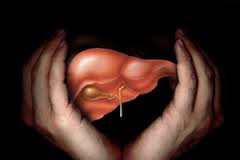- Home
- Editorial
- News
- Practice Guidelines
- Anesthesiology Guidelines
- Cancer Guidelines
- Cardiac Sciences Guidelines
- Critical Care Guidelines
- Dentistry Guidelines
- Dermatology Guidelines
- Diabetes and Endo Guidelines
- Diagnostics Guidelines
- ENT Guidelines
- Featured Practice Guidelines
- Gastroenterology Guidelines
- Geriatrics Guidelines
- Medicine Guidelines
- Nephrology Guidelines
- Neurosciences Guidelines
- Obs and Gynae Guidelines
- Ophthalmology Guidelines
- Orthopaedics Guidelines
- Paediatrics Guidelines
- Psychiatry Guidelines
- Pulmonology Guidelines
- Radiology Guidelines
- Surgery Guidelines
- Urology Guidelines
Red yeast rice supplement caused liver damage: A case report

Red yeast rice supplement has the potential to cause liver damage, warn doctors in the journal BMJ Case Reports after a 64-year old woman developed acute liver injury after six weeks of taking the supplement.
Red yeast rice is a supplement made by fermenting steamed rice with food fungus and is often used to lower high cholesterol as an alternative to statin medication.
But it contains monacolin K, the same active chemical found in the cholesterol-lowering drug lovastatin, and therefore carries the same risk of liver damage, say the authors.
In this particular case, a 64-year old woman was admitted to hospital with symptoms of hepatotoxicity (liver damage) six weeks after starting a 1200 mg per day of red yeast rice supplement to lower her cholesterol, due to being hesitant about taking statins.
For two weeks, the woman had been experiencing fatigue, bloating and feeling full sooner than usual. And her urine was darker, her stools were lighter, and she had recently developed jaundice.
She did not report any liver disease, blood transfusion, contact with anyone ill or recent travel. And apart from B12 injections for anaemia, she did not take any medication.
The woman was a non-smoker, drank two glasses of red wine every night, and had an active lifestyle.
A liver biopsy showed findings consistent with acute drug-induced liver injury (DILI). While alcohol intake was considered and may have contributed to her disease, the nature and timeline of it suggests DILI was the cause, write the authors.
The woman was treated with steroids and her liver function was monitored weekly after she was discharged. She was advised not to use the supplement again.
This report refers to just one case, and more research is needed to establish any possible association and mechanism of toxicity. But several cases of red yeast hepatotoxicity have been previously documented, write the authors, and these have shown that recovery may take months after discontinuing.
“As this case demonstrates, red yeast rice supplement has the potential to cause severe adverse effects, such as acute liver injury,” say the authors. And they warn that these effects “are difficult to pre-empt, in part because the concentration of monacolin K in red yeast rice is not regulated.” As such, they call for more regulation of supplements to prevent harmful side effects.
“Supplements are not necessarily safer than prescription medications, and physicians and patients should research their adverse effect profile before using them or approving their use,” they conclude.
For more details click on the link: http://casereports.bmj/

Disclaimer: This site is primarily intended for healthcare professionals. Any content/information on this website does not replace the advice of medical and/or health professionals and should not be construed as medical/diagnostic advice/endorsement or prescription. Use of this site is subject to our terms of use, privacy policy, advertisement policy. © 2020 Minerva Medical Treatment Pvt Ltd